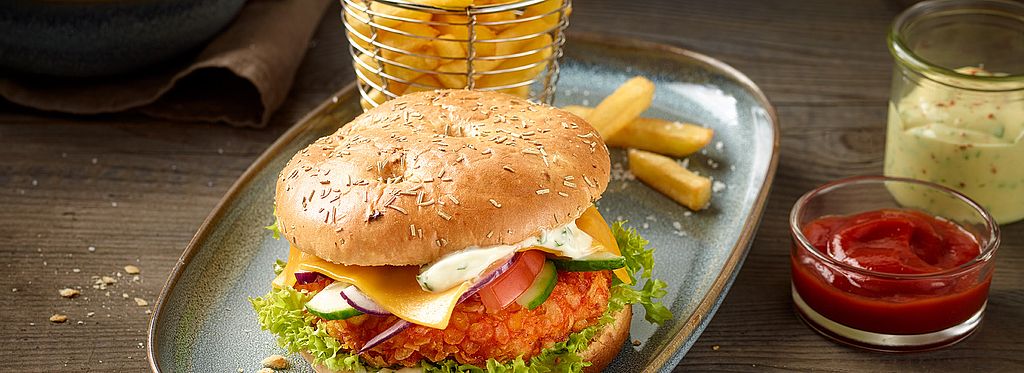How do you perceive the current situation in the gastronomy and communal catering sectors?
Gastronomy and communal catering (CC) are still under significant pressure. This is highlighted by our current study "Nutrition 3.0 – Communal Catering Between Staff Shortages and Nutritional Change," which will be presented in the INTERNORGA issue of the trade magazine gvpraxis. Rising costs, price pressures, growing staff shortages, and heavy bureaucratic burdens pose major challenges for many businesses, which will not diminish in the future. The ambitious nutritional strategy of the federal government, with its many regulations, adds further demands for professional kitchens in CC, which are often difficult or even impossible to implement in practice.
The severe shortage of skilled workers particularly affects independent restaurants. Many are closing due to a lack of staff or successors. Restaurateurs are reducing their menus or drastically limiting opening hours. New solutions are needed. Professionalization and efficiency are key to long-term success.
The out-of-home frozen food market is booming: In 2023, sales exceeded two million tons for the first time. How can frozen products support gastronomy and communal catering amid these enormous challenges?
High-quality frozen food provides relief, offers problem-solving expertise, and meets all the core requirements of the gastronomy sector. As such, it plays a crucial role in communal catering. The demand for (frozen) fresh products that can be customized to the needs of gastronomy and CC businesses is increasing.
Frozen products are long-lasting and easy to store. Restaurateurs can manage their inventory better and reduce food waste. With proper storage management, waste can be eliminated entirely. Frozen food also ensures consistently reliable, safe, high-quality flavors and textures. Even in cases of delivery delays or staff shortages, restaurateurs can trust that their dishes will always meet the same high standard.
Additionally, frozen products offer great versatility: A broad and deep range of products, with varying levels of convenience, enables kitchen professionals to quickly adapt their creative, individual menus to new trends – from low to high convenience, catering to all tastes and budgets!
How have customer preferences changed?
Eating habits have become more flexible and demanding in recent years. Snacking has become a lifestyle trend, with smaller portions, takeaway, and delivery solutions increasingly replacing full meals. The most important trend for 2025 is naturalness. Plant-based cuisine remains popular. Anyone looking for plant-based, vegan, and natural products for their customers will find an ever-growing selection of smart, innovative, and deep-frozen fresh products in the frozen category that can be refined individually.
The quality of food and culinary performance are key success factors in the gastronomy sector, but price will also play an increasing role. Restaurateurs must focus even more on efficiency and flexibility while catering to the diverse needs of their guests, including dietary restrictions and special nutrition preferences.
The wide range of frozen food products offers safe, high-quality solutions to balance customer demands with economic considerations. A key to the future success of gastronomy lies in leveraging a high level of convenience while simultaneously creating a unique dining experience.
How can frozen food enhance the gastronomic experience?
Frozen products are innovative and tailored to the needs of the restaurant industry. They offer a unique variety of traditional classics and trendy, modern dishes. This keeps them at the forefront of trends, helping restaurateurs delight their discerning guests with a unique, individualized dining experience despite the challenges behind the scenes. With numerous benefits for professional kitchens, frozen food rightly presents itself as a solution provider: customizable, featuring cool recipes, creative yet convenient in preparation. The Cook & Freeze concept offers immense potential for fresh, nutrient-rich nutrition, particularly in communal catering.
The broad range of frozen food options enables restaurateurs to quickly adapt their creative, individual menus to new trends. Frozen products come in various degrees of preparation, from peeled vegetables to premium finger food for exclusive catering events – leaving hardly any culinary desires unfulfilled.
How does the dti support the gastronomy sector?
Staff shortages, price pressures, uncertain demand, and the VAT increase at the beginning of 2024 continue to put immense pressure on the gastronomy and communal catering sectors.
In its policy paper for the 2025 federal election on February 23, the dti calls for a uniform VAT rate of 7% for all food, whether in retail or gastronomy, supporting the industry association DEHOGA.
Beyond this specific political support, we also advocate in Berlin and across Germany for greater recognition and appreciation of frozen food’s role as a key problem solver in gastronomy.
As the leading association of the frozen food industry, the dti has represented the interests of the German frozen food sector since 1956. Our members span the entire value chain (food manufacturers, retail, technology, logistics). Through our Out-of-Home Market Working Group, we provide a unique network of around 40 dti member companies in the out-of-home sector – unmatched by any other association. This makes the dti and its members the "voice of the market," offering cross-category, practical solutions across all frozen food product groups.
Our goal is to support hosts in gastronomy and communal catering so they can once again focus on fulfilling their guests’ needs and desires with passion and craftsmanship – out of love for great food.






